Red-banded Hairstreak (Calycopis cecrops)
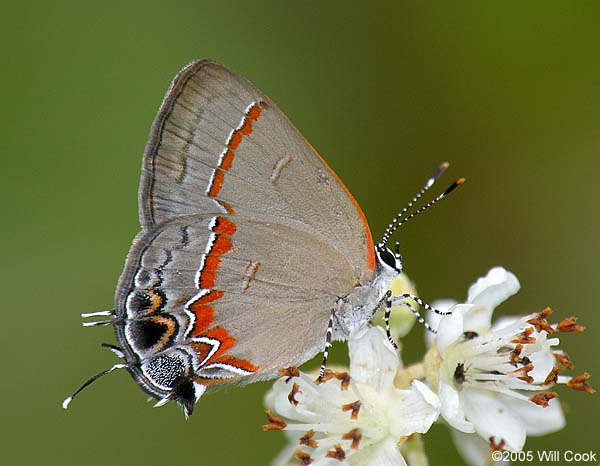
| One of our most common and distinctive hairstreaks. They occur throughout North Carolina, but are most common in the Coastal Plain and lower Piedmont. The caterpillars feed on fallen (or live) leaves of sumacs (Rhus), especially Winged Sumac (Rhus copallinum), and certain other tree species such as oaks (Quercus) and Wax Myrtle (Morella cerifera). This one was nectaring on Coastal Sweet Pepperbush (Clethra alnifolia). Raven Rock State Park, Harnett Co., NC 8/18/05. |
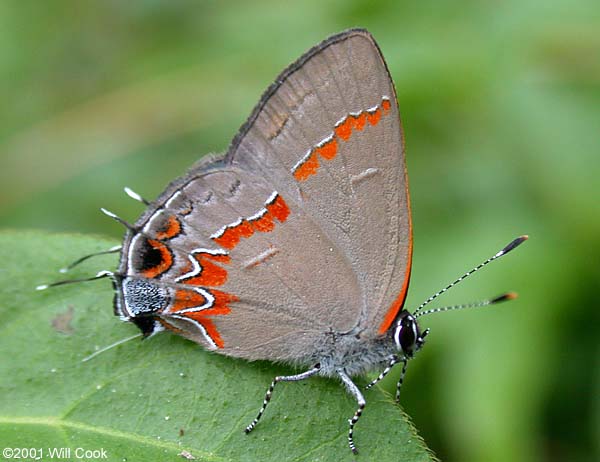
| Pasquotank Co., NC 9/29/01. |
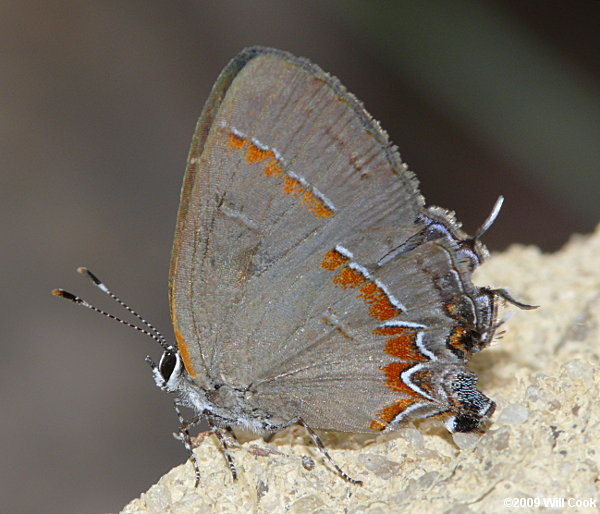
| Scotland Co., NC 10/4/09. |
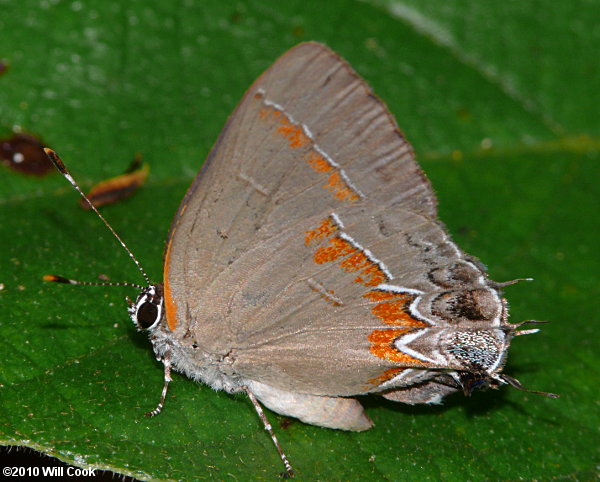
| Red-banded Hairstreak is common from southern Florida to New Jersey west to eastern Texas and southeastern Kansas. Long Pine Key, Everglades National Park, Miami-Dade Co., FL 6/23/2010. |
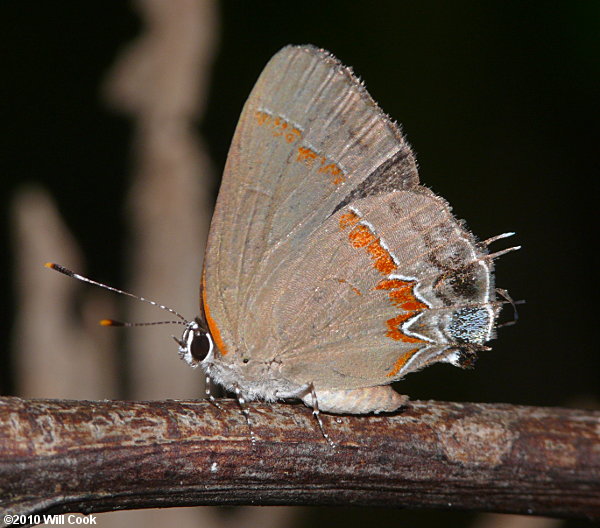
| Long Pine Key, Everglades National Park, Miami-Dade Co., FL 6/28/2010. |
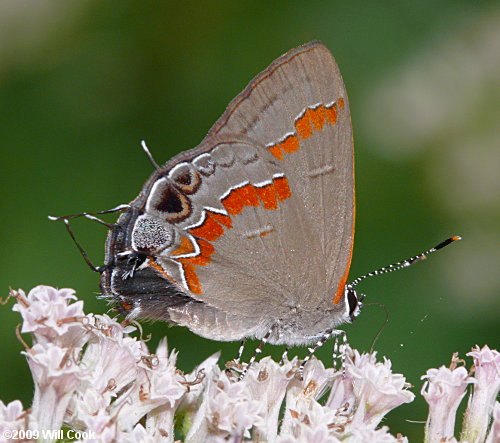
| Chatham Co., NC 9/19/09. |
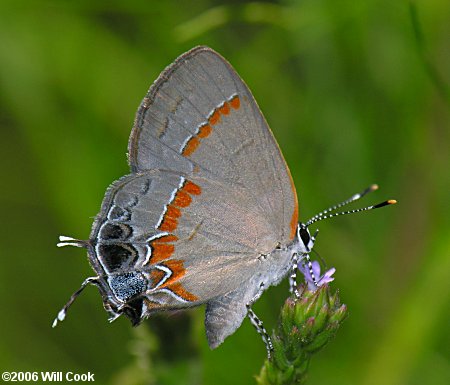
| Red-banded Hairstreaks can be almost abundant at times, but I never get tired of them! Craven Co., NC 8/27/06. |
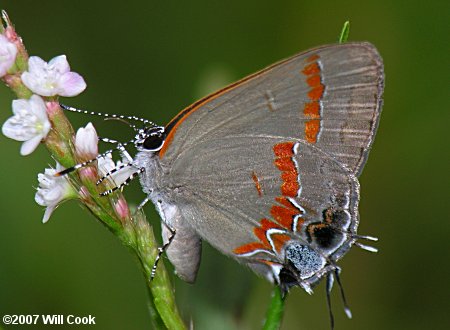
| Durham Co., NC 8/19/07. |
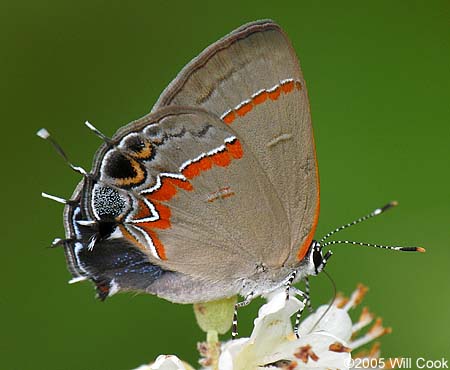
| The top sides of the wings have some blue color, usually glimpsed briefly as the butterfly rubs its wings together (as here) or in flight. This is the same individual as in the top photo. Raven Rock State Park, Harnett Co., NC 8/18/05. |
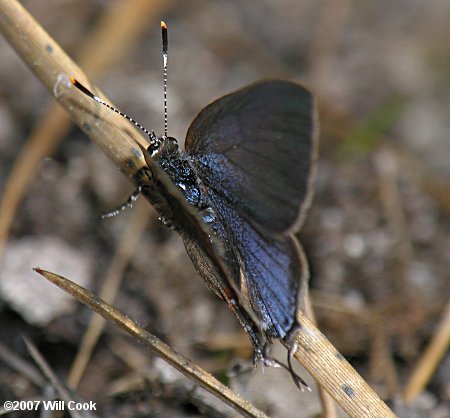
| A glimpse at the brilliant blue of the upper surfaces of the wings. They never perch with their wings open. Bladen Co., NC 3/25/07. |
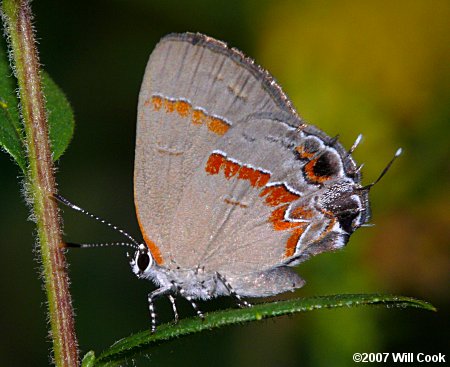
| Durham, NC 9/25/07. |